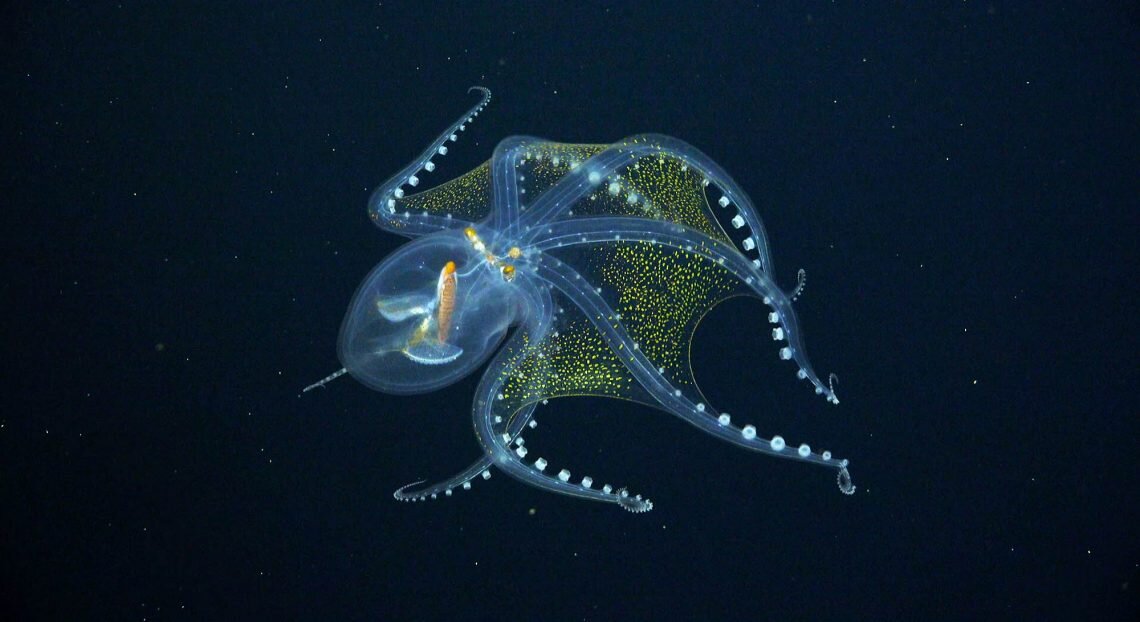Rarely Seen Glass Octopus Caught on Camera by Marine Scientists
The nearly transparent marine animal was filmed during an expedition off of the Phoenix Islands in the Pacific Ocean.
The Schmidt Ocean Institute
Rare footage of a glass octopus - named for its transparent skin - has been documented by marine scientists exploring seamounts in the Pacific Ocean.
The octopus (Vitreledonella richardi) has nearly transparent skin, meaning that its only visible features are its optic nerve, eyeballs and digestive tract. The see-through appearance of the glass octopus may help the animal hide from both predators and prey, according to Scientific American, and despite awareness of its existence for over 100 years, little is known about this elusive sea creature and its population. It is listed as a ‘Species of Least Concern’ by the IUCN.
The scientists spent 34-days conducting high-resolution mapping of more than 30,000 square kilometres of seafloor. The exhibition will help to inform policy and management in decision making about new high seas protected areas, according to Dr. Randi Rotjan of Boston University.
During the exhibition scientists reported two rare sightings of a glass octopus, one of the least studied cephalopods in the world. Prior to this, there was limited footage of the marine animals.
SuBastian, the Schmidt Ocean Institute's underwater robot, also captured the first-ever recorded footage of a rare whale shark, a deep-water species that dates back millions of years and gets its name from its length of more than 40 feet. Scientists also observed unusual marine behaviour, such as crabs stealing fish from one another, during the exhibition.
Researchers saw this striking and clear example of corallivory: a predator eating coral mucus, tissue, even skeleton of a coral. Here a corallivorous deep-sea sea star Evoplosoma eats live coral at a depth of 2004m on a previously unexplored ABNJ seamount (Area Beyond National Jurisdiction).
“The Ocean holds wonders and promises we haven’t even imagined, much less discovered,” said Wendy Schmidt, co-founder of Schmidt Ocean Institute. “Expeditions like these teach us why we need to increase our efforts to restore and better understand marine ecosystems everywhere – because the great chain of life that begins in the ocean is critical for human health and wellbeing.”
More stories:
Species Unite
A collection of stories of those who fight the good fight on behalf of animals.





Leather, wool, feathers: even if they were by-products, would that make a difference?